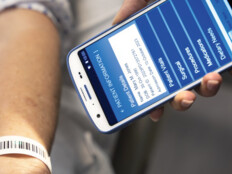Real-Time Location Systems Help Hospitals Track the Chaos
It’s no secret that hospitals are enormous organizations with huge legions of clinicians, staff and other assets — both human and tech related. But keeping track of these assets can be a monumental task, and one that, even when managed well, doesn’t offer complete visibility into the day-to-day frenzy of hospital operations.
As patients and hospital staff alike begin to expect a more streamlined experience, real-time location systems can help offer that visibility that managers and others need to streamline hospital processes and properly allocate resources. The use of RTLS in healthcare organizations is on the rise, in fact, as CIOs and operations managers seek out workflow efficiencies and cost savings by employing the systems in the form of tags or badges on equipment and personnel.
A recent study by Zebra Technologies entitled “The Future of Healthcare: 2022 Hospital Vision Study,” notes that the simple act of getting lost on the way to patient rooms or trying to track down a missing nurse can cost hours of lost productivity for staff. Not to mention that time spent wandering hallways make the patient experience more
“In an effort to curtail these losses and increase visibility, hospitals are adopting real-time location systems (RTLS) and mobile computing to automatically track the real-time geographic location of everything from equipment, supplies and pharmaceuticals to patients and staff,” the report states.
And when it comes to the staff themselves, there’s also plenty of advantages to having man-hours be fully visible to managers or operations teams, particularly during times when assets might be particularly scattered, such as during or directly after a hospital relocation.
SIGN UP: Get more news from the HealthTech newsletter in your inbox every two weeks!
Parkland Health Taps RTLS to Revamp Staff Management
To determine the most efficient way to transfer patients after a move to its new campus, Parkland Health & Hospital System deployed RTLS technology and data analytics.
The hospital’s executives engaged their internal Operational Excellence team, which used RTLS technology to monitor how people moved through the new campus, then plotted out the fastest routes, says Senior Vice President and CIO Matthew Kull. Electronic tags can measure the signal strength between each wireless access point and locate a person to within 6 feet.
“We tracked everyone using real-time location technology and applied statistical analysis on what we thought a transport agent’s endurance would be,” Kull says. “For instance, if you are pushing patients all day long, you can’t work an eight-hour shift. We conducted studies around that and utilized the data collected to devise our plan.”









